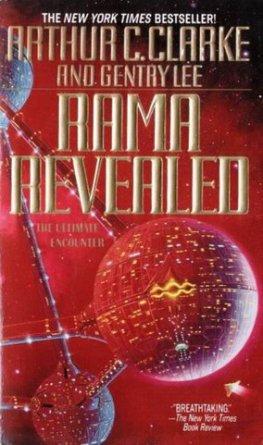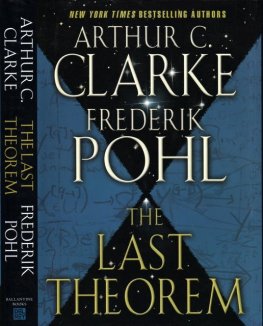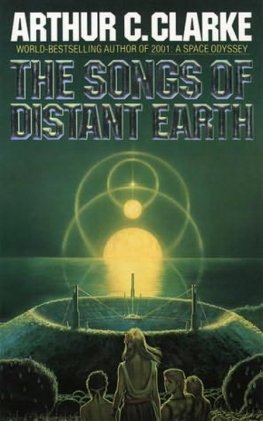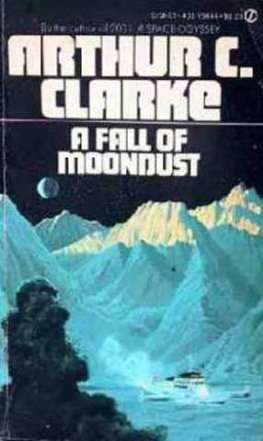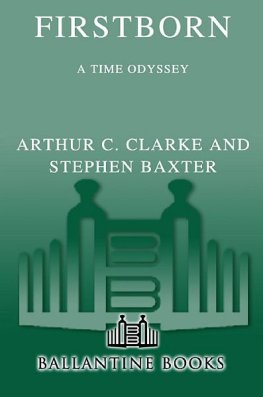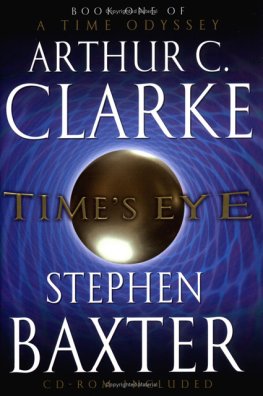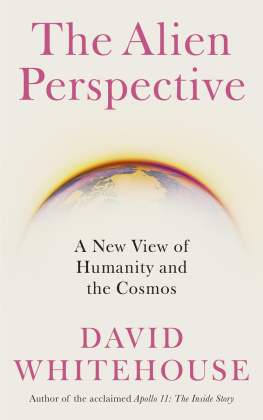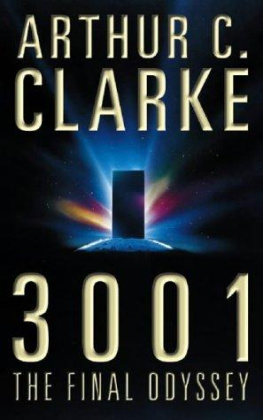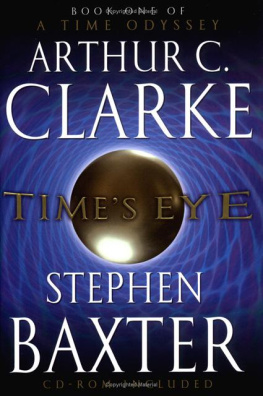Arthur Clarke - Cradle
Here you can read online Arthur Clarke - Cradle full text of the book (entire story) in english for free. Download pdf and epub, get meaning, cover and reviews about this ebook. year: 1988, publisher: Warner Books, genre: Science fiction. Description of the work, (preface) as well as reviews are available. Best literature library LitArk.com created for fans of good reading and offers a wide selection of genres:
Romance novel
Science fiction
Adventure
Detective
Science
History
Home and family
Prose
Art
Politics
Computer
Non-fiction
Religion
Business
Children
Humor
Choose a favorite category and find really read worthwhile books. Enjoy immersion in the world of imagination, feel the emotions of the characters or learn something new for yourself, make an fascinating discovery.

- Book:Cradle
- Author:
- Publisher:Warner Books
- Genre:
- Year:1988
- ISBN:0-446-51379-2
- Rating:3 / 5
- Favourites:Add to favourites
- Your mark:
- 60
- 1
- 2
- 3
- 4
- 5
Cradle: summary, description and annotation
We offer to read an annotation, description, summary or preface (depends on what the author of the book "Cradle" wrote himself). If you haven't found the necessary information about the book — write in the comments, we will try to find it.
Cradle — read online for free the complete book (whole text) full work
Below is the text of the book, divided by pages. System saving the place of the last page read, allows you to conveniently read the book "Cradle" online for free, without having to search again every time where you left off. Put a bookmark, and you can go to the page where you finished reading at any time.
Font size:
Interval:
Bookmark:
Arthur C. Clarke & Gentry Lee
Cradle
The emerald water smashes against the dark volcanic cliffs. Fine white spray hovers over the harsh rock creating a misty veil that glimmers in the fading light. In the distance, two yellow suns set simultaneously, separated by about forty degrees as they disappear together below the horizon. Across the blue-black sky, on the opposite side of the isthmus that slopes gently downward from the volcanic cliffs to another ocean, a pair of full moons rise as the two suns vanish. Their twin moonlight, although much weaker than the shine of the disappearing suns, is still strong enough to create dancing moon shadows on the ocean beneath the rocky overhang.
As the dual moons rise on the eastern side of the isthmus, light begins to glow on the horizon beside them, about twenty degrees to the south. At first the glow looks like the light of a distant city, but with each passing moment it brightens until it spreads across the sky. At length an awesome third moon, its first chord coming over the horizon when the twin moons are maybe ten degrees into their arc, begins to rise. Calm descends on both oceans for a few seconds, as if the world beneath the giant orb has paused to give homage to the spectacular sight. This great yellow moon, its face clearly scarred by craters, appears to be surveying its dominion as it slowly rises in the sky and bathes the emerald oceans in a mysterious reflected light. It is a hundred times the size of the smaller twin moons and its wide swath through the sky is greater in size than that cut minutes before by the pair of setting suns.
Below the cliffs, in the shadow of the newest moon, a long sinuous object arcs its way out of the water, rising nearly twenty feet above the surface. The slender apparition twists itself toward the cliffs and thrusts itself forward as the piercing sound of a trumpet, a solo blast, reverberates against the rocks and carries across the isthmus. A moment later another sound is heard, a muted echo or possibly a reply from the other sea. The creature swims gracefully into the moonlight, its long, lithe neck a cobalt blue above a gray body mostly submerged in the ocean. Now the bluenecked serpent extends itself upward again and leans toward the land, its face revealed in the expanding moonlight. The facial features are convoluted and complex, with rows of orifices of unknown purpose. At the peak of its extension, the creature contorts its face and a medley of sounds is heard; the trumpet blast is now accompanied by an oboe and an organ. After a short pause a muted response, quieter but with the same rich complexity of sound, comes back across the isthmus.
The serpent swims north along the shore. Behind it in the moonlight half a dozen other swirling necks rise from the ocean. These creatures are a little smaller, the hues of their cobalt necks not quite so vivid. This ensemble turns as one, on cue, and blasts six trumpet calls to the east. Again a pause precedes the expected response, the sound of several smaller trumpets from across the land. Immediately the six new creatures and their distant friends begin a complex, interleaved musical pattern, slowly building in intensity until the overture reaches an inevitable crescendo and then abruptly abates.
After a few moments more the oceans on both sides of the isthmus become alive with teeming serpents of all sizes. Hundreds, even thousands, of serpents, covering the water for as far as the eye can see, begin languorously extending their necks, twisting as if looking around, and joining in the singing. The serpents of the eastern sea are slightly smaller than their western cousins. The necks of the eastern serpents are pale blue instead of cobalt. These pale blue serpents are also joined by a nursery of tiny creatures, the palest of blue markings on their necks, whose singing is high-pitched and a trifle erratic and sounds like piccolos interspersed with crystal bells.
The waters of the emerald oceans begin to surge forward in tidal frenzy, now rapidly moving up the rocky cliffs on the western side and quickly submerging great chunks of land on the sloping side that runs to the eastern ocean. The concerted pull of all the moons produces a tide that will eventually cover the isthmus completely, uniting the two oceans. As the waters draw ever closer together, the music from the thousand singing serpents swells to magnificence, flooding the entire area with a sound of mesmerizing beauty. It is also a plaintive sound of longing and anticipation, the universal cry of long-suppressed desire on the verge of being satisfied.
The great longnecked serpents of Canthor conclude their annual mating symphony as the two oceans become one and the inhabitants of each ocean seek out their lifelong mates in the united waters. There are five nights out of each Canthorean year when the tidal forces act together to submerge the isthmus and permit the sexual mixing of the serpents. Five nights of love play and frolicking, of renewal and promise, before the requisite return to the separate oceans and a year of waiting for the great tide to come again.
For the little ones, the new serpents placed into gestation by the last annual gathering and hatched by their mothers in the eastern ocean, the great tide is a time of excitement and sadness. They must now separate from their playmates, leave their infancy behind. Half must depart from their mothers as well and go to swim among the cobalt blue adults that they have never met. This half, having lived their lives among their mothers friends exclusively, will swim above and across the isthmus on the fifth night alongside their fathers. Once into the western ocean, their pale blue necks will begin to deepen in color as they begin the transition through puberty into adulthood. And next year, their tiny voices will have matured just enough that each of them may detect some arousing and positive response to his call during the mating symphony.
Thousands of years pass on the planet Canthor. The forces of change conspire against the beautiful bluenecked serpents. First a major ice age comes to the world, locking up more of the planets water in perennial polar caps and lowering the seas. The number of days that the great tide submerges the isthmus is reduced to four, then three, and finally only two. The elaborate mating ritual of the serpents, worked out over hundreds of generations, works best for a five-night courtship. For the several hundred years that only two nights are available for mating, the number of serpent offspring produced each year drops precipitously. The total number of Canthorean serpents becomes dangerously small.
At length the radiative output of the dual suns increases slightly again and Canthor emerges from its ice age. The sea level rises and the number of days for mating returns eventually to five. The serpent symphony, which had added a saddened counterpoint during the trying years of reduced mating nights, again becomes charged with joy. For several generations the number of serpents increases. But then the lovely creatures encounter another foe.
Evolving elsewhere on Canthor for almost a million years has been another intelligent species, a fierce, squat creature with an insatiable appetite for control. The ice age stimulated the rapid evolution of these trolls by enforcing a strict survival of the fittest that naturally selected those individuals with the most resources (intelligence and power primarily) and, in a sense, purified the troll gene pool.
The troll species that emerges from the thousands of years of ice domination on Canthor is sharper and more capable of dealing with the rest of its environment. It has become a tool maker and has learned how to use the riches of the planet for its benefit. No other living creatures on Canthor can match the cleverness of the trolls or threaten their existence. So the trolls proliferate around the planet, dominating it completely with their rapaciousness.
Font size:
Interval:
Bookmark:
Similar books «Cradle»
Look at similar books to Cradle. We have selected literature similar in name and meaning in the hope of providing readers with more options to find new, interesting, not yet read works.
Discussion, reviews of the book Cradle and just readers' own opinions. Leave your comments, write what you think about the work, its meaning or the main characters. Specify what exactly you liked and what you didn't like, and why you think so.

